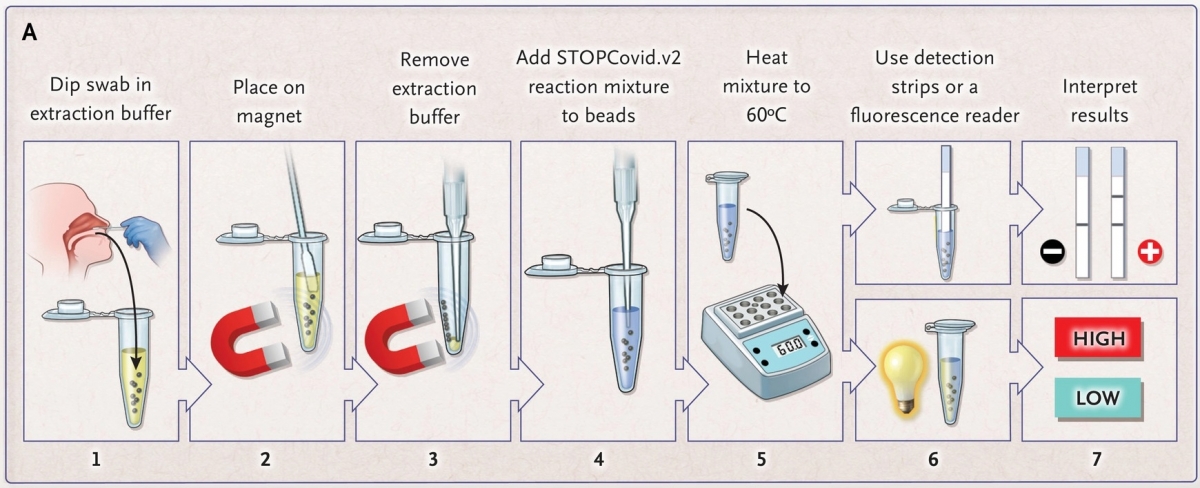Faster, cheaper diagnostic tests for COVID-19 could potentially help control the spread of disease and facilitate safe openings of schools and businesses. Since the start of the pandemic, Former Damon Runyon Innovator Feng Zhang, PhD, and colleagues at MIT, the Broad Institute, and Harvard have been working on a CRISPR-based diagnostic for COVID-19 that can produce accurate results in 30 minutes to an hour—compared to several days necessary for the standard PCR technology currently used. The new test, known as STOPCovid, is still in the research stage but, in principle, could be made inexpensively enough to allow for daily testing at home.
Using 402 patient samples, 202 positive and 200 negative, the researchers determined that the new test detected 93 percent of the positive cases as verified by the standard PCR test from the Centers for Disease Control (CDC). They hope to simplify the test, so it can be used by patients at home.
Watch Dr. Zhang in his lab as he discusses how this diagnostic test was developed:
How it works
The streamlined “one-pot” test combines extraction of viral RNA, chemicals to amplify the RNA sample, and CRISPR-mediated detection. The test uses magnetic beads that attract the viral RNA in a patient sample to isolate and concentrate this genetic material, which is then amplified using chemical reagents. CRISPR enzymes can then recognize the genetic signature of the SARS-CoV-2 virus for a positive readout. In the absence of viral RNA, the test will be negative.
Results appear on an easy-to-read strip that is akin to a pregnancy test, without the need for expensive or specialized lab equipment.

The patient samples used in this study were taken using the less-invasive anterior nasal swab that involves twirling the swab around the lower part of the nostrils. The researchers are also examining how well STOPCovid works with saliva samples, which could make at-home tests even easier to perform.
“The goal is to make this test easy to use and sensitive, so that we can tell whether or not someone is carrying the virus as early as possible,” Dr. Zhang says.
This work was a collaboration with scientists at the University of Washington, Fred Hutchinson Cancer Research Center, Brigham and Women's Hospital, and the Ragon Institute.
Read more: STOPCovid: New rapid test shows improved sensitivity
The findings were published in the New England Journal of Medicine.







